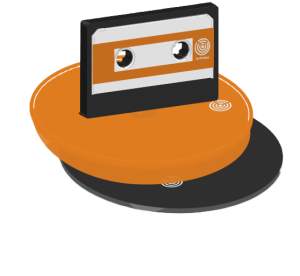Consent and intellectual property
➔ Data Flow Model: Consent
Researcher question(s):
I have different types of consent, and layers of ownership to negotiate, where do I start? What if you have to go back and retrace ownership for publishing permissions? What consent and permissions should you seek out early in a project? What could I do differently going forward? Are my artworks and other forms of cultural expression “research data”? What permissions apply to the owned works versus the data I create in studying them?
? ? ? ! *
*Data Flow model questions that help you think through this complexity:
- Who is the owner of the data?
- Are there ownership or licensing conditions that will shape access and reuse of your data?
At the start of the project, it is important to understand the distinction between research material, and research data as they are managed differently. Research material is the source, the impulse for your inquiry and it is unprocessed; whereas research data is processed and is often more accessible than original research material. According to the Tri-Council, research material is the ‘object of investigation’ (think of material objects, such as archival sources or items in a museum collection), whereas the research data is created through your methodologies as you engage with your research material (such as your findings or results). However, when working with a principle of Indigenous data sovereignty (with information from or about First Nations, for example) this distinction matters less. What matters most is the roles and relationships towards the information; researchers per se may not have a say in how “research materials” were collected or are managed and governed, but archivists do. For example, from a First Nations perspective neither the research “material” or research “data” should be released without First Nations permission.
You should make this distinction between research material and research data as the consent or licensing conditions for access may be different. You may not have the license to re-share the research material you are studying, but you may have the right to create data and share this data as part of your larger research project output. Your rights to share your research data will depend on your collaborators as well, and negotiation for what will be shared, and how, also needs to be done in the early stages of the project.
Choosing how open your project is does not solely rely on your wishes and ideals. The use and reuse of data for publishing is contingent on contextual conditions of consent, ownership, and permissions. Copyright and informed consent must be tracked to reuse the data. When accessing your different types of consent, permissions, and rights, you can think that the end goal is to make the data as open as possible but not necessarily open. Or “as open as possible and as closed as necessary” [FAIR]. That is to say, various layers of consent and permissions will shape how open the data you wish to reuse and publish can be. Your desired use of the data may not determine what is possible for your project, but rather the constraints of your informed consent protocols or intellectual property licenses, or if you are working with First Nations, Métis, and/or Inuit research partners who have ownership of their data. Plan your data curation early in the process; it allows you to potentially partner up with data owners at the onset of the project and move along the data flow process in partnership with other actors, instead of finding yourself hitting an impasse during the process.
Note: The technical details of how these principles will apply in your specific research project are beyond the scope of this guide. It will be up to you to define and find the resources to support your specific technical requirements.

Research material for the SpokenWeb project consists of the original audio recordings, and the research data is the metadata describing these recordings, or interpretation and analysis of the content of the recordings. For example, researchers use the audio recordings (research material) to do a gender analysis of how much time is allocated to women or men during a literary reading event (research data). Or, researchers use the audio recordings (research material) to create metadata descriptions listing authors’ names audible on the recording (research data).
Further, SpokenWeb has digitized analogue “literary” events recordings, born digital “literary” event recordings, and born digital recordings (oral history). The original analogue recordings and their cases are “research materials” and the digitized versions and their metadata descriptions are “research data.” (For more details about metadata, see the Data Collection section of this guide.)

